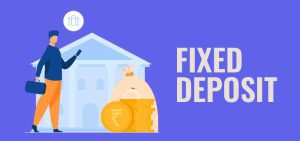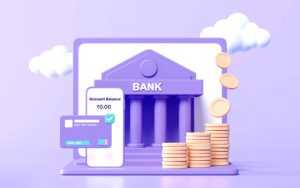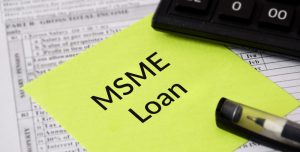5 Tricks To Recover Yourself From Debt

DIY Debt Consolidation Tips
Once people realize they have fallen into thousands of dollars in debt they ask themselves how they can use the three R’s of debt settlement: Resolve, Reduce, and Repay. The answers may be blowing in the wind, but once they’re under your wing you can fly home debt free.
Every rapid debt relief gimmick you may see on TV promises to reduce your debt by settling it for a fraction. They also promise to get you into a repayment plan you can live with according to your means. And are also all going to charge fees for helping you through the process. But you can do the same without having to spend a cent if you do it yourself. You got into debt on your own, to begin with, you can get out of it on your own as well.
Knowing where to begin in the journey of debt consolidation will make your path easier to navigate. No need to pay third parties for something you can accomplish yourself. Want to know how debt consolidation works? Take heed of the following steps.
Analyze Your Debt
Known as revolving debt, credit card debt among Americans has reached the neat trillion dollar benchmark. The average US resident has an estimated debt of $5,000. When reviewing your outstanding debt, are you below or above the average American debtor? What kind of debt do you carry? What are the terms of your loans, and what do you plan on doing to resolve, reduce and repay your debt? Knowing the facts will, in turn, reveal the solutions and options that apply to your particular situation. It’s a truism; the solution is always found within the problem itself?
Debt resolution and debt consolidation start with taking a hard look at your situation no matter how much you dread it. Gather all your loan contracts and sit down with your credit report to go over every debt and payment entry. In case you are not aware, every consumer in the US is entitled to receive one free credit report from each of the three credit reporting agencies in the nation, Equifax, Trans Union, and Experian.
If there are any errors on your credit reports, you may dispute each item separately following the bureau’s guidelines in a letter and send it using snail mail. The contested creditor must show proof justifying the negative entry on your credit report within 30 days.
Once you accept the amount of money you owe each creditor, including fees and penalties, you can start the second step. The next step is to add all your debts together except your mortgage and student loan. Include your auto loan, payday loans, and other debts. That should give you an overall picture of your debt.
Living Within A Budget
Once you know how much you owe, the next step is to get a handle on your expenses to fit a monthly budget. Calculate the sum of your monthly living costs starting with your rent or mortgage.
Include auto payment, daycare, food, gas, insurance, and utilities in your budget. Then, you can subtract the sum of these costs from your monthly income after taxes. If there is not a lot left over, look for ways to reduce the costs and increase your income.
Save on utilities by being more environmentally conscious. Prepare your meals at home; purchase only necessary items. Once you start to see a margin of funds, save it. Over time you will be able to use this fund to leverage your debt consolidation negotiations.
An incentive for living within a budget is to build the necessary funds needed for emergency situations, retirement, and debt consolidation negotiations. Once you are debt free your margin could be allocated to retirement and emergency funds. It’s important to calculate vacations and splurges into your budget. You can still enjoy yourself and splurge once in a blue moon.
Planning Your Next Move
Depending on how much of a margin you’ve got left over after paying all the bills, you’ll want to start putting more money into the loan with the highest interest rate. If your credit card or your payday loans are at the top if this list, calculate how long it will take you to pay it off.
The rest of your loans should continue to be paid on time every month. But you will want to tackle the highest interest debt first. Once one is paid off you can start with the next in line.
But what happens when you’re caught in a never-ending cycle of payday to payday loans or you have outstanding balances on several credit cards? The best thing for you to do is to find out how you can consolidate the debt. Meanwhile, don’t make any charges on your credit cards that will increase your debt.
Negotiate
Let’s talk about how to approach negotiations. If your repayment plan is marching on well and you are able to resolve or pay off the debt in a reasonable amount of time, your goal would be to reduce the interest rate. But if your debt is too steep and has high-interest rates it will take you much longer to pay off the balance. The most recommended action to take in either case is to call the lender’s customer service representative and negotiate better terms for your loans. You may be able to reduce the interest rate or settle your debt for less. Don’t take no for an answer.
Insist, offer options, let them know you may not be able to make payments and need to settle to avoid a write-off. Lenders hate write-offs as much as you. Their company stocks drop when their loans default. They may be willing to accept a partial sum, reduce the interest rate, or refinance. Once accounts are in collections, it is easier to leverage than when you are making payments on time. You know your financial situation better than anyone and what terms you can accept or decline. Just don’t give up.
One way of resolving a debt is to transfer balances to a credit card offering 6-12 month 0% introductory interest. If you can afford to make high payments for a year, or less, this is a good option. Every consolidation has two things to bear in mind, the interest and the number of months it will take you to repay the debt. The longer it takes to pay off the loan the more interest you will pay. So negotiate for as low an interest as you can get. A home equity line of credit or HELOC is another option. These typically take 10 years to pay off at no interest but then spirals to high interest after that period.
Follow Through And Reflect
Once you have reduced and resolved to repay according to new terms and conditions, do your best to stay on track. If new conditions arise and you receive a bonus, well, you know what you should do with it. Pay off you debt. Call them up again and start the process all over. Your goal is to be debt free, and paying as much as you can each month will get you there that much faster. Keep track of your progress and throw a party once you achieve your goal.






